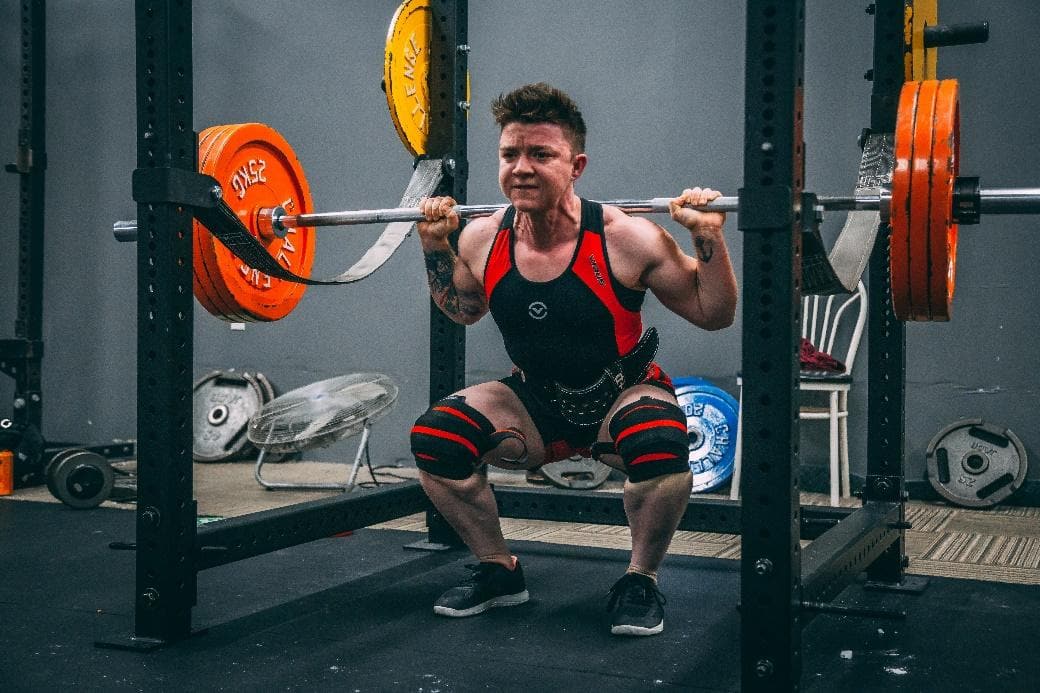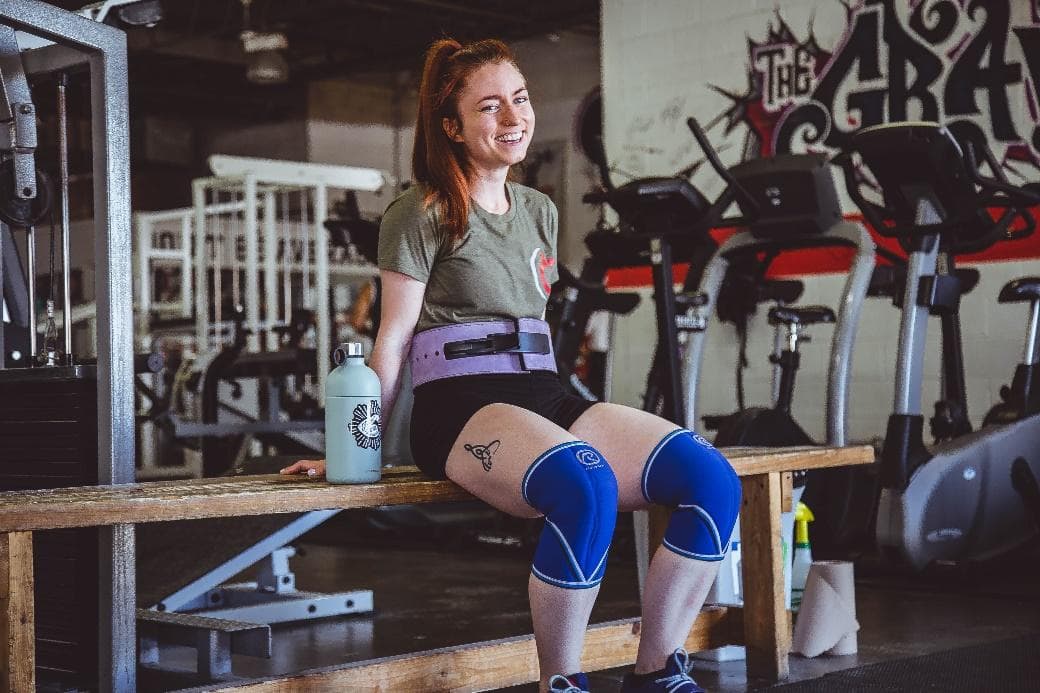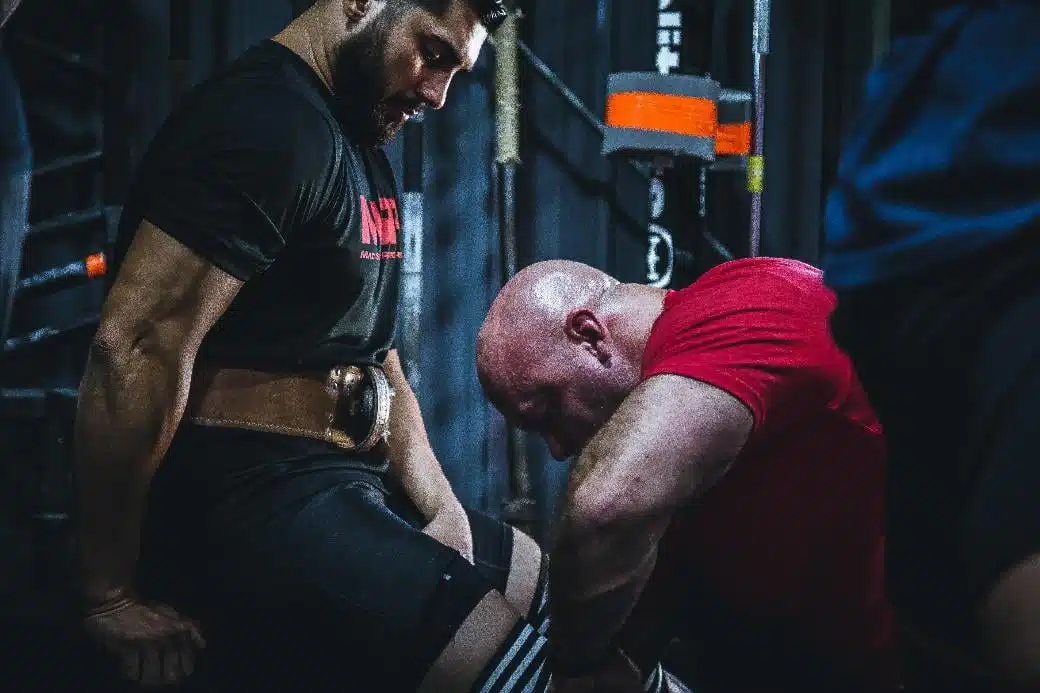24 de November de 2023
Raw Powerlifting vs Equipped Powerlifting
History of the Split in Powerlifting: Raw vs. Equipped

In powerlifting, competitors engage in three classic movements: squat with a barbell, bench press, and deadlift, each designed to measure different aspects of maximum strength. With the foundation of the International Powerlifting Federation (IPF) in November 1972, the first official IPF World Championship took place in 1973 in Harrisburg, PA, USA. Lifters, both men and women starting from 14 years old, compete in specific age groups and weight categories. Weight categories start at 43 kg for women and go up to the unlimited men’s category of over 120 kg. The IPF is a leading global federation in powerlifting, but there are also many other powerlifting federations worldwide.
Initially, new technology in powerlifting equipment advanced with the goal of protecting against injuries, but it later shifted to improving results in maximum load lifts. Knee sleeves, essentially compression bandages, progressed to various knee sleeves, squat and deadlift suits, and bench press shirts. This led to increasing differences between competitors using one type of equipment or another, distorting the competition.
Similar technological advancements have been seen in many other sports, such as the use of carbon fiber in running shoes to run faster in marathons, or the ‘magic’ swimsuits in swimming that broke numerous world records. Both running shoes and those ‘magic’ swimsuits were regulated and even banned because they were considered sports doping. Something similar happens with equipped powerlifting gear, as it is proven that the typical suits or elastic gear in this discipline help in extending the knee and hip, resulting in better powerlifting marks compared to not wearing them. The same applies to the elbow joint, which is assisted by using the specific elastic shirt worn by raw powerlifting competitors.
That is why, since 2013, powerlifting competition is divided into two divisions: raw powerlifting and equipped powerlifting. Without having the slightest idea of raw or equipped powerlifting, you can intuit the main difference between them: the equipment used. Raw powerlifting limits the use of materials that can provide an extra benefit to the competitor, beyond the allowed belt. In contrast, equipped powerlifting accepts materials that give an extra assist to the lifter in all three powerlifting movements: squat, bench press, and deadlift.
What’s Raw Powerlifting?
Before defining raw powerlifting, we want to narrow down the name of this modality in Spanish. The term ‘raw’ translates from English as ‘crudo’ (raw), ‘bruto’ (rough), or ‘puro’ (pure). The term ‘powerlifting’ means ‘levantamiento de pesas’ (weightlifting) in Spanish, but it is a concept used as is by practitioners of this strength discipline. Therefore, we can use terms like ‘powerlifting crudo,’ ‘powerlifting bruto,’ or ‘powerlifting puro‘ in Spanish. In this article, we will use ‘powerlifting en bruto,’ although you can use the one you prefer, whether in Spanish or the original English term: ‘raw powerlifting.’
As the name suggests, this powerlifting modality is performed with little or no additional equipment, beyond a belt, shirt, wrist wraps, knee sleeves, and chalk or magnesium, all of which must be approved by the organizing body in which you compete. Each organization has its own rules, and in one federation, certain knee sleeves may be allowed for raw powerlifting, while in another, it may not be permitted. The only way to avoid mistakes is to carefully read the list of materials approved by the federation in which you intend to compete.
[banner_device_2]
Some federations have two categories of raw powerlifting: classic and modern. The difference between them is that classic raw powerlifting does not allow the use of knee sleeves, while modern raw powerlifting does. The rest is limited to what we have discussed earlier
What’s Powerlifting Equipped?
“Powerlifting equipped” is a concept much easier to define in Spanish, and its name, ‘powerlifting equipado‘ (equipped powerlifting), clearly indicates the difference compared to raw powerlifting. The equipped modality allows the addition of elements to the raw powerlifting equipment (belt, shirt, wrist wraps, and chalk) that help us when lifting weights in the squat, bench press, and deadlift. This equipment is made up of different elastic materials that provide extra energy in the movements, thus improving performance.
In turn, equipped powerlifting is divided into two main categories: single-ply (one layer) and multi-ply (multiple layers). The difference between them is determined by the layers of fabric incorporated into the garment. These elastic layers are designed specifically to stretch to a certain limit and harness that elastic energy to lift more weight. A greater number of layers provide more elasticity and extra assistance. What happens if you stretch a rubber band? It wants to return to its place; the more you stretch it, the more energy it accumulates to return to its initial point. If you stretch two instead of one, the energy is even greater. This is the difference that gives equipped powerlifters a significant advantage over those competing in raw powerlifting.
Materials That Make the Difference Between Raw and Equipped Powerlifting
There are supportive materials allowed in both raw and equipped powerlifting, such as powerlifting shoes, wrist wraps, and chalk or magnesium to get a better grip on the bar and prevent slipping in hands or on clothing. From here, the differences with the permitted and approved materials begin, depending on the greater or lesser assistance to the lifter in achieving higher marks simply by using such material. The tighter and more restrictive the material, the potentially greater weight can be lifted. The more experience, technical competence, and confidence an equipped powerlifter has, the greater their potential will be.
Sleeved or Elastic Suit for Squat and Deadlift
The equipped powerlifting suits or singlets are designed with a single layer of high resistance (single-ply) or multiple layers (multi-ply), aiming to accumulate elastic energy during deadlifts and squats. These suits can be so rigid that some powerlifters struggle to reach deep squats because the suit hinders them, and there’s even a risk of fainting due to the blood constriction it generates.
When performing hip and knee flexion in deadlifts and squats, the suit will stretch to a limit, assisting in the subsequent hip and knee extension for greater performance (Blatnik et al., 2012). This equipped powerlifting material is elastic and sturdy, exerting a braking effect on movement during the eccentric phase. This means that the fabric will stretch to a limit, where a lot of elastic energy is created. Then, the fabric will quickly and forcefully try to return to its original shape, creating the “pop” or increased momentum in the final ranges of the basic powerlifting movements (Todd Dominic Morais & Pollack Terry Todd, 2015).
The tension in the material can provide additional elastic energy that aids the athlete during the eccentric phase, giving a “rebound” effect during the concentric phase of the lift, increasing the maximum lifted load and power output (Gepfert et al., 2020; Godawa et al., 2012; Lake et al., 2012; Wilk, Krzysztofik, et al., 2020).
Stretch Shirt for Bench Press
The operation of the stretch shirt in the bench press is the same as that produced by powerlifting suits for squats and deadlifts. The stiffness of this material is such that the powerlifter wearing it walks without being able to bend their arms because they cannot overcome the tension of the shirt. Once they grip the bar, the weight of the bar helps flex the elbows, causing the shirt to stretch, accumulating elastic energy as the suits did in squats and deadlifts. Once the bar touches the chest, the elastic energy from the shirt adds to the force exerted by the lifter, achieving better records than they could achieve without this equipment while competing in raw powerlifting (Michal et al., 2020; Wilk et al., 2022; Wilk, Gepfert, et al., 2020).
Knee Sleeves

Knee sleeves are a controversial topic in weightlifting. Some federations consider knee sleeves as equipped lifting, while others do not. Wraps are another material used as a knee wrap and seem to improve knee stabilization and also help the athlete come out of the squat with more strength (study). Depending on the federation, wraps or knee sleeves can be used, and the type of these can be specified, such as requiring only one elastic layer or not taking it into account.
This material can help to a greater or lesser extent and uses the same technology as the examples of previous materials. The elastic properties of knee sleeves enhance mechanical performance in knee extension, which would be very beneficial in achieving marks in the squat (Machek et al., 2021).
Raw Powerlifting vs Equipped Powerlifting: Comparison of World Records

The website Lif Vault constantly updates all powerlifting world records, both raw and equipped. From it, we extract the following marks that allow us to see the enormous difference that exists in the elite of powerlifting between raw powerlifting and equipped powerlifting.
Powerlifting World Records in Total Weight Lifted
- Male world record for total weight (summing squat, bench press, and deadlift) in raw powerlifting is 1,153 kg, compared to 1,407.5 kg in equipped powerlifting, a difference of about 250 kg.
- Female world record for total weight in raw powerlifting is 735 kg, compared to 930 kg in equipped powerlifting, a difference of around 200 kg.
Powerlifting World Records in Squat
- Male world record for squat in raw powerlifting is 490 kg, compared to 594.5 kg in equipped powerlifting, a difference of over 100 kg.
- Female world record for squat in raw powerlifting is 279 kg, compared to 419.5 kg in equipped powerlifting, a difference of almost 150 kg.
Powerlifting World Records in Bench Press
- The male world record for bench press in raw powerlifting is 355 kg, compared to 612 kg in equipped powerlifting, a massive difference of 250 kg.
- The female world record for bench press in raw powerlifting is 207 kg, compared to 295 kg in equipped powerlifting, a difference of about 90 kg.
Powerlifting World Records in Deadlift
- The male world record for deadlift in raw powerlifting is 487 kg, compared to 457 kg in equipped powerlifting. This is the only case where there is no difference, as deadlift is the lift with the least improvement from equipment.
- The female world record for deadlift in raw powerlifting is 290 kg, compared to 314.5 kg in equipped powerlifting, a difference of about 25 kg.
References
Blatnik, J. A., Skinner, J. W., & McBride, J. M. (2012). Effect of supportive equipment on force, velocity, and power in the squat. Journal of Strength and Conditioning Research, 26(12), 3204–3208. https://doi.org/10.1519/JSC.0B013E3182736641
Gepfert, M., Krzysztofik, M., Kostrzewa, M., Jarosz, J., Trybulski, R., Zajac, A., & Wilk, M. (2020). The Acute Impact of External Compression on Back Squat Performance in Competitive Athletes. International Journal of Environmental Research and Public Health, 17(13), 1–11. https://doi.org/10.3390/IJERPH17134674
Godawa, T. M., Credeur, D. P., & Welsch, M. A. (2012). Influence of compressive gear on powerlifting performance: role of blood flow restriction training. Journal of Strength and Conditioning Research, 26(5), 1274–1280. https://doi.org/10.1519/JSC.0B013E3182510643
Lake, J. P., Carden, P. J. C., & Shorter, K. A. (2012). Wearing knee wraps affects mechanical output and performance characteristics of back squat exercise. Journal of Strength and Conditioning Research, 26(10), 2844–2849. https://doi.org/10.1519/JSC.0B013E3182429840
Machek, S. B., Cardaci, T. D., Wilburn, D. T., Cholewinski, M. C., Latt, S. L., Harris, D. R., & Willoughby, D. S. (2021). Neoprene Knee Sleeves of Varying Tightness Augment Barbell Squat One Repetition Maximum Performance Without Improving Other Indices of Muscular Strength, Power, or Endurance. Journal of Strength and Conditioning Research, 35(Suppl 1), S6–S15. https://doi.org/10.1519/JSC.0000000000003869
Michal, W., Michal, K., & Marcin, B. (2020). The influence of compressive gear on maximal load lifted in competitive powerlifting. Biology of Sport, 37(4), 437. https://doi.org/10.5114/BIOLSPORT.2021.100145
Todd Dominic Morais, J. G., & Pollack Terry Todd, B. (2015). Shifting Gear: A Historical Analysis of the Use of Supportive Apparel in Powerlifting Repository Citation. https://digitalcommons.trinity.edu/busadmin_faculty
Wilk, M., Gepfert, M., Krzysztofik, M., Stastny, P., Zajac, A., & Bogdanis, G. C. (2020). Acute Effects of Continuous and Intermittent Blood Flow Restriction on Movement Velocity During Bench Press Exercise Against Different Loads. Frontiers in Physiology, 11. https://doi.org/10.3389/FPHYS.2020.569915
Wilk, M., Krzysztofik, M., Filip, A., Lockie, R. G., & Zajac, A. (2020). The Acute Effects of External Compression With Blood Flow Restriction on Maximal Strength and Strength-Endurance Performance of the Upper Limbs. Frontiers in Physiology, 11. https://doi.org/10.3389/FPHYS.2020.00567
Wilk, M., Krzysztofik, M., Filip, A., Zajac, A., Bogdanis, G. C., & Lockie, R. G. (2022). Short-Term Blood Flow Restriction Increases Power Output and Bar Velocity During the Bench Press. Journal of Strength and Conditioning Research, 36(8), 2082–2088. https://doi.org/10.1519/JSC.0000000000003649

